When it comes to traumatic brain injuries (TBIs), damage to the brain stem is among the most severe and life-altering. The brain stem serves as the body’s command center, controlling vital functions like breathing, heartbeat, and consciousness. An injury to this critical area can have serious consequences—but with the right information and support, patients and their families can better understand what to expect and how to manage the road ahead.
In this article, we’ll provide a comprehensive overview of brain stem injuries, including causes, symptoms, treatments, and recovery options.
What Is the Brain Stem?
The brain stem is located at the base of the brain, connecting the cerebrum to the spinal cord. It consists of three major parts—the midbrain, pons, and medulla oblongata—and plays a crucial role in regulating automatic body functions, such as:
- Breathing
- Heart rate
- Blood pressure
- Sleep and wake cycles
- Swallowing
- Eye movements
Due to its essential role in controlling these vital systems, even minor injuries to the brain stem can lead to significant impairments.
What Is a Brain Stem Injury?
A brain stem injury refers to any damage sustained by the brain stem, whether through external trauma or internal causes. These injuries can vary in severity, from mild concussions affecting function temporarily to severe cases resulting in coma or long-term disability.
Unlike other forms of traumatic brain injury, brain stem injuries are particularly dangerous because they disrupt the core systems that keep us alive.
To understand how brain stem injuries fit within the broader scope of traumatic brain injuries, visit our overview of traumatic brain injury.
Causes of Brain Stem Injuries
Brain stem injuries can occur due to a wide range of incidents. The most common causes include:
Traumatic Causes:
- Motor vehicle accidents
- Falls (especially among older adults)
- Sports injuries
- Violent assaults or blows to the head
Non-Traumatic Causes:
- Stroke (particularly brain stem strokes)
- Tumors pressing on the brain stem
- Infections like meningitis or encephalitis
- Lack of oxygen (e.g., near-drowning or cardiac arrest)
Symptoms of Brain Stem Injuries
Because the brain stem controls many of the body’s automatic functions, damage to this area can result in a wide range of symptoms. These may include:
Physical Symptoms:
- Difficulty breathing or irregular respiration
- Rapid or slowed heart rate
- Loss of motor control or coordination
- Difficulty swallowing (dysphagia)
- Impaired speech or voice changes
Neurological Symptoms:
- Coma or loss of consciousness
- Problems with eye movement or pupil response
- Sensory loss or paralysis (especially on one side of the body)
- Difficulty regulating body temperature
How Are Brain Stem Injuries Diagnosed?
Medical professionals typically diagnose brain stem injuries using a combination of:
- Neuroimaging: CT scans and MRIs to visualize damage
- Neurological exams: Assessing reflexes, motor responses, and consciousness levels
- Glasgow Coma Scale (GCS): To determine the severity of the injury
In emergency settings, rapid diagnosis and stabilization are key to improving outcomes.
Treatment Options for Brain Stem Injuries
Treatment plans depend on the severity and cause of the injury. Immediate care often involves:
- Airway and breathing support
- Monitoring of vital signs
- Surgical intervention (e.g., to relieve pressure or remove a tumor)
Following stabilization, patients may undergo long-term rehabilitation, which can include:
- Physical therapy to improve strength and mobility
- Speech therapy for communication and swallowing issues
- Occupational therapy to regain daily living skills
To learn more about rehabilitation options and long-term care, visit our page on life after a severe brain injury.
Recovery and Prognosis
Recovery from a brain stem injury varies widely and depends on several factors, such as:
- The extent and location of the damage
- The individual’s age and overall health
- The speed and effectiveness of medical treatment
Some individuals may regain many lost functions with time and therapy, while others may face permanent challenges. In some cases, patients may remain in a minimally conscious state or coma.
Early intervention and consistent rehabilitation can greatly improve the chances of a meaningful recovery.
Coping and Support Resources
Caring for someone with a brain stem injury can be emotionally and physically demanding. Support systems play a key role in both patient recovery and caregiver well-being.
Here are a few helpful tips and resources:
- Seek out TBI support groups—either online or in person
- Work closely with a care team to coordinate medical and therapy plans
- Don’t hesitate to ask for help—both emotionally and practically
You can explore more resources on our page for TBI caregivers and families.
Final Thoughts
Brain stem injuries are among the most critical forms of traumatic brain injury, but with the right knowledge, support, and care, recovery is possible. Recognizing the symptoms early and seeking prompt medical attention can make a life-saving difference.
If you or a loved one is navigating life after a brain stem injury, the Traumatic Brain Injury Information Hub is here to guide you with trusted information and compassionate resources.


